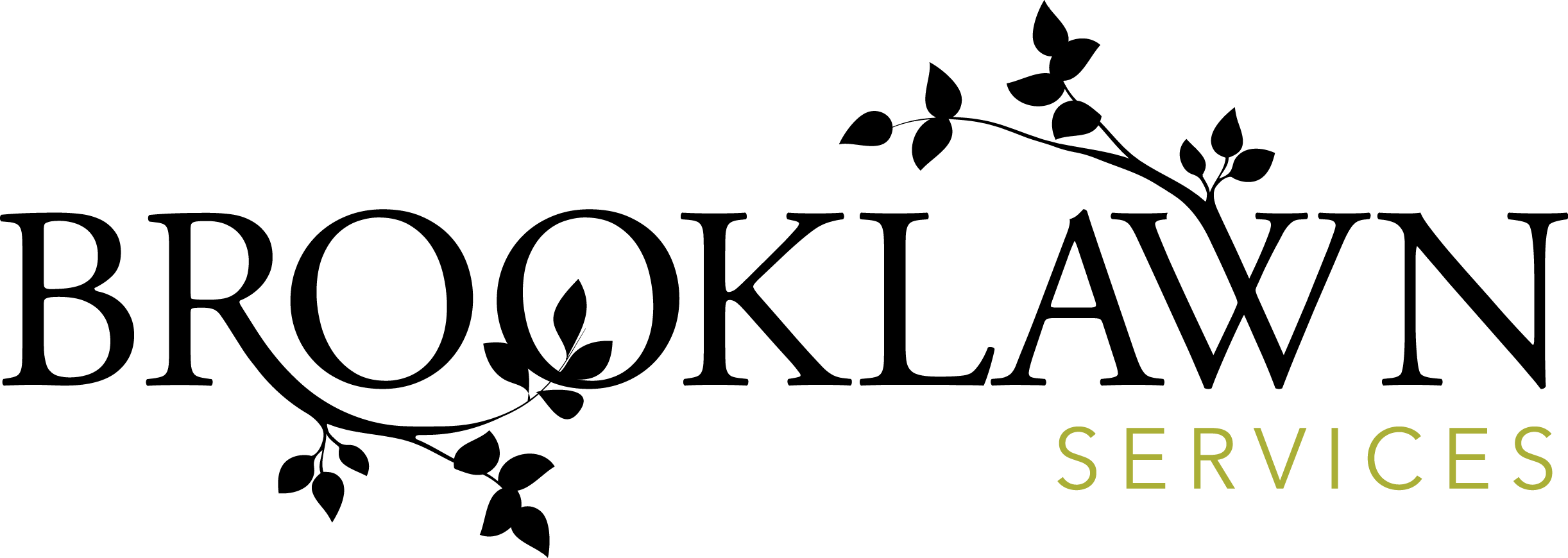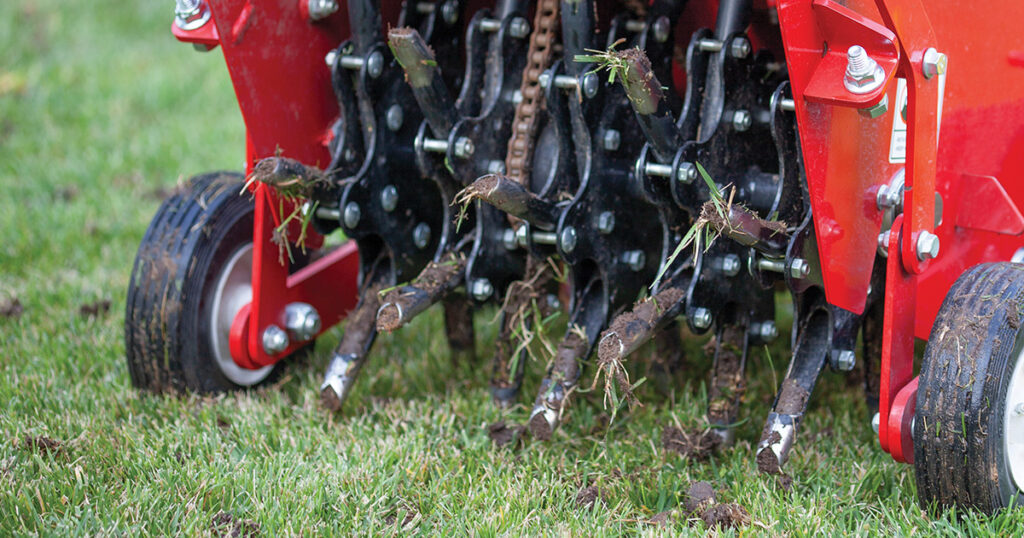Regardless of whether your lawn is thick and green, or you have small bare areas that need help filling in, aeration and overseeding are the most beneficial services you can perform on your lawn all year. Core aeration is a key element to creating and maintaining a lush, green lawn, and it can provide great benefits for the health and appearance of most turfgrass species in Indiana.
Lawn aeration involves the removal of small soil plugs or cores from the ground leaving 2.5″ – 4″ holes in the lawn. Don’t be alarmed – this is part of the process! The holes allow nutrients and water to go deep into the soil, in addition to making this the perfect time to add new varieties of turfgrass seed to the lawn (that’s where overseeding comes in). The seed falls into the holes left behind by the core aerator and germinates. As the final stage in the process, this allows for new grass plants to grow with deep roots—making your lawn thicker and healthier.
The soil in Central and East Central Indiana tends to have a lot of clay in it, making it especially susceptible to becoming compact. Annual aeration is so important in loosening up this soil to promote healthy root systems and flourishing grass.
Aeration and overseeding are relatively simple processes, but it’s important to understand exactly when these services should be done, how to care for your lawn afterward, and which lawns are best suited for these services. As one of Indiana’s leading lawn care providers, we’re here to answer all your questions and help you understand everything you need to know about aeration and overseeding. Let’s dive in.
What is aeration?
Aeration is the process of removing small plugs of soil and thatch from the lawn. Over time, soil can become compacted, preventing oxygen, water, and nutrients from reaching the roots. By breaking up the compacted soil, aeration allows for these nutrients to better reach the root system. This expands the root system and creates thicker, healthier grass.
What is overseeding?
Overseeding is exactly what it sounds like: the process of spreading a blanket coverage of seed over an area of your lawn. Overseeding works with the aeration process to promote thicker turf and to improve the overall appearance of the lawn.
How do I know if my lawn needs aeration and overseeding?
All lawns benefit from aeration. Aeration is a regular maintenance and preventative treatment—so even if your lawn already looks healthy, we recommend aerating every year to keep it looking thick and lush.
Overseeding, on the other hand, is not recommended for every lawn. Overseeding is only necessary for established lawns that have visibly thin, dead, and/or diseased spots.
When should I aerate and overseed? When will I see results?
We recommend aerating and overseeding in the fall, generally between late August and November. Lawns with excessive traffic, like golf courses, should be aerated multiple times a year. Seed is important to get down between late August and early October for proper germination.
With overseeding, you might see results in as little as 2 weeks. Benefits from aeration are visible by the following spring, though you may see some results within just a month.
How do I aerate and overseed my lawn?
Aerating and overseeding a lawn can be a labor-intensive and time-consuming process. We recommend hiring experienced professionals. At Brooklawn, our lawn technicians have the equipment and expertise to properly aerate and overseed an average lawn typically in around one hour.
Once your lawn has been aerated and overseeded, it’s important to keep it moist. We recommend watering at least every other day for the next 2-4 weeks, skipping days when Mother Nature provides the water.
Wondering what it would take to aerate and overseed your lawn? Contact us to get a custom quote and to schedule these services!
Request a quote today!


